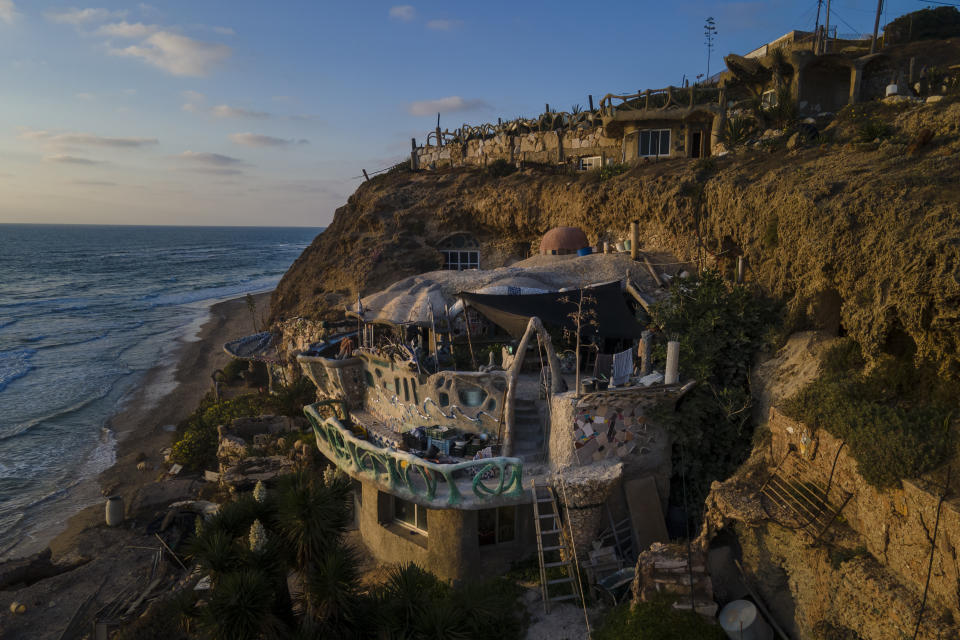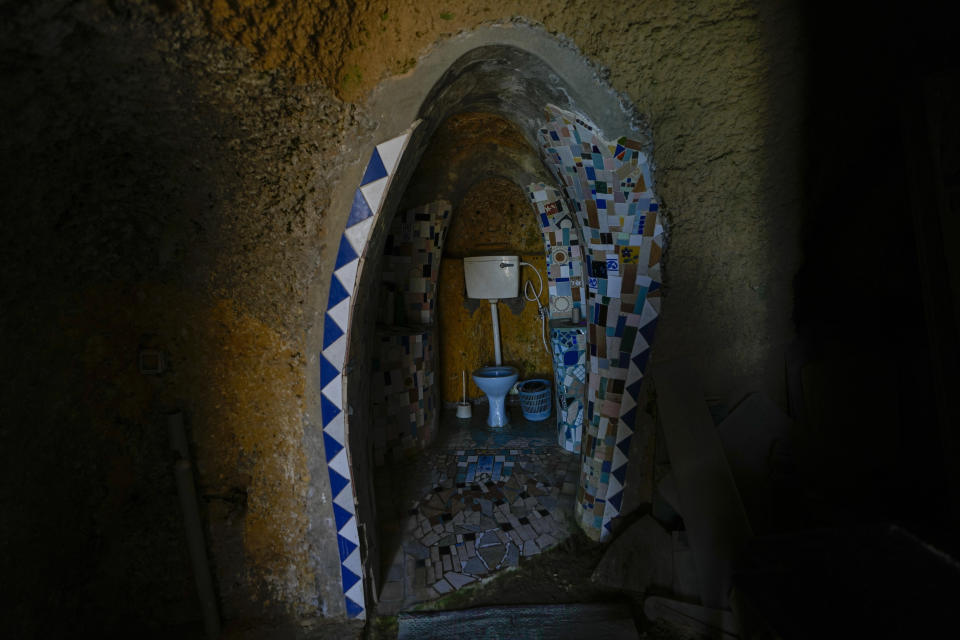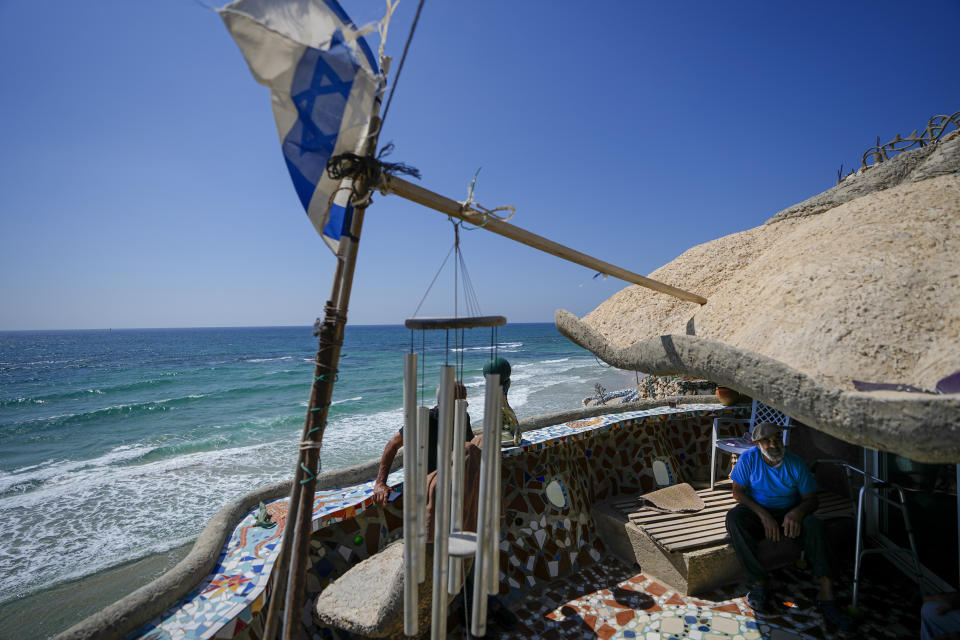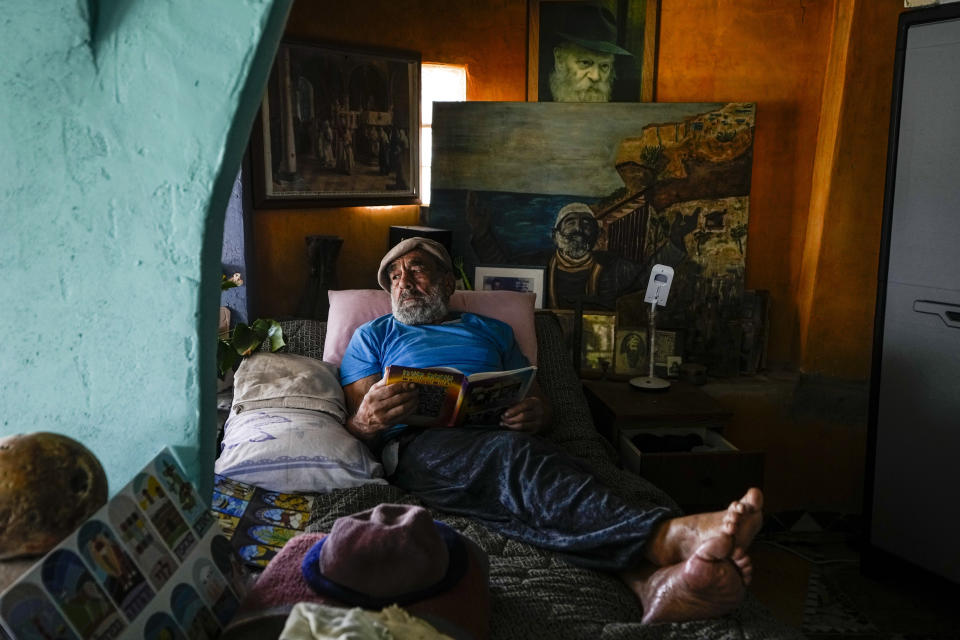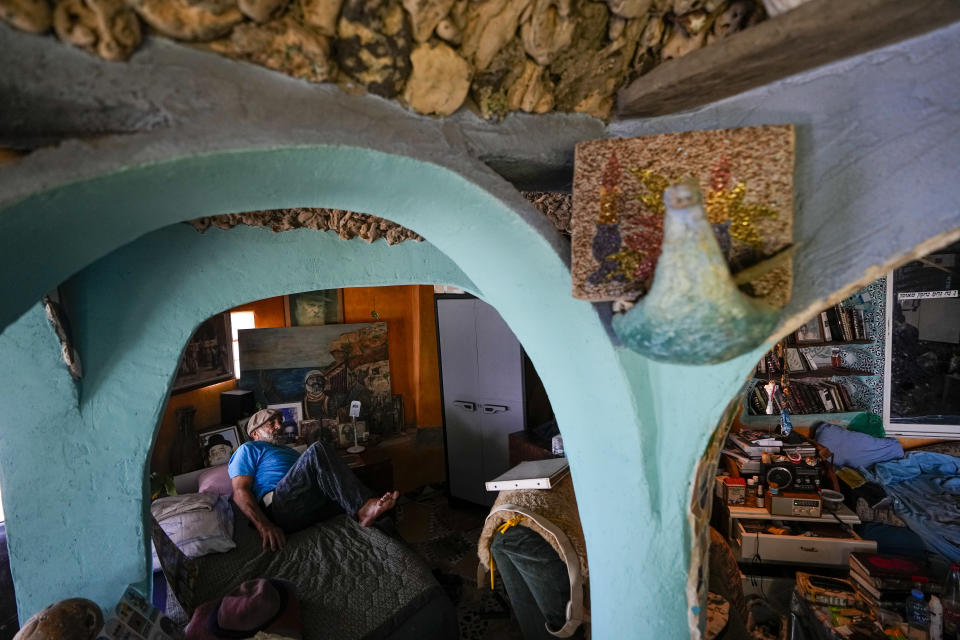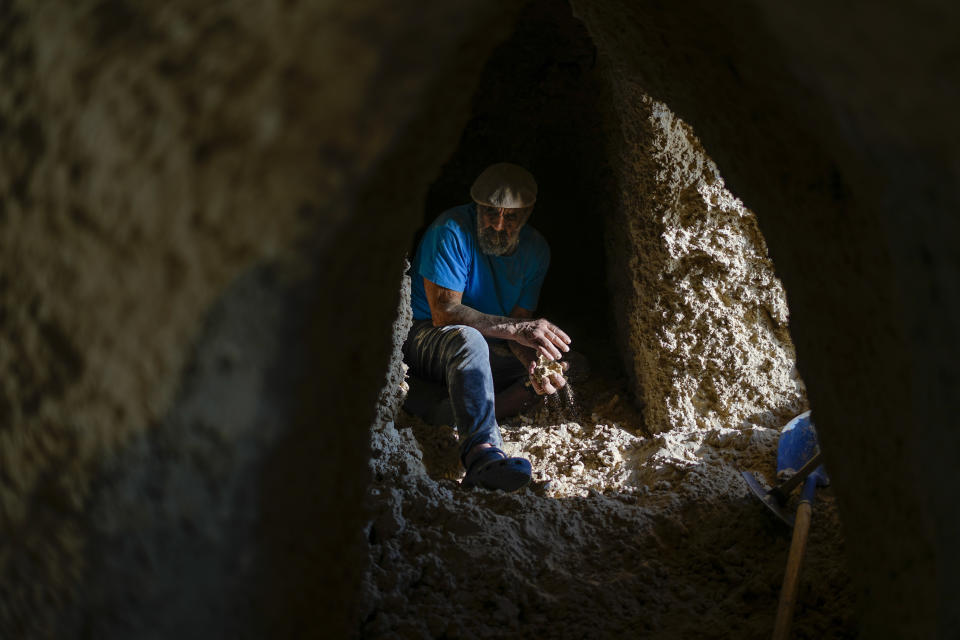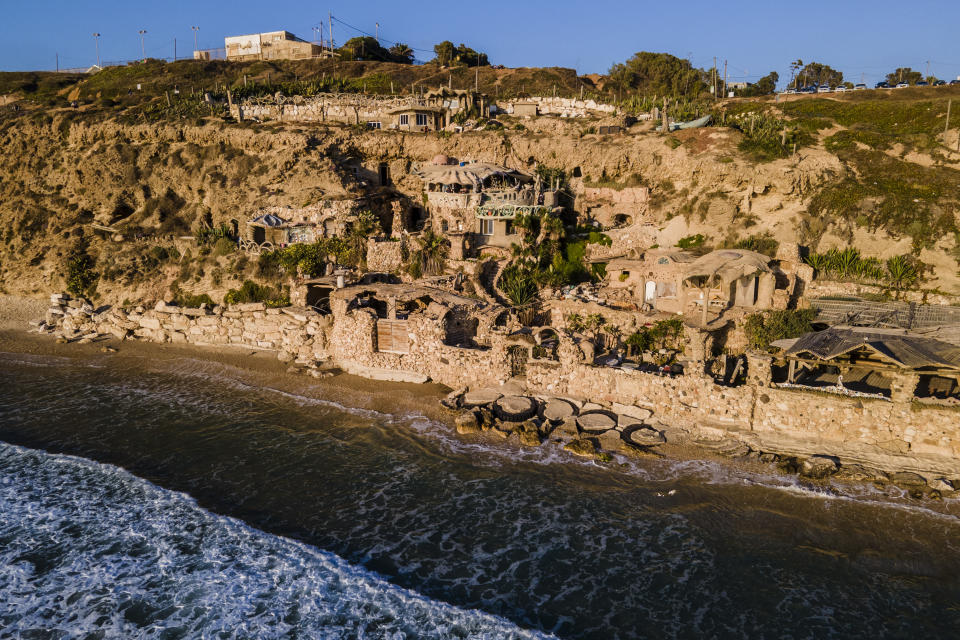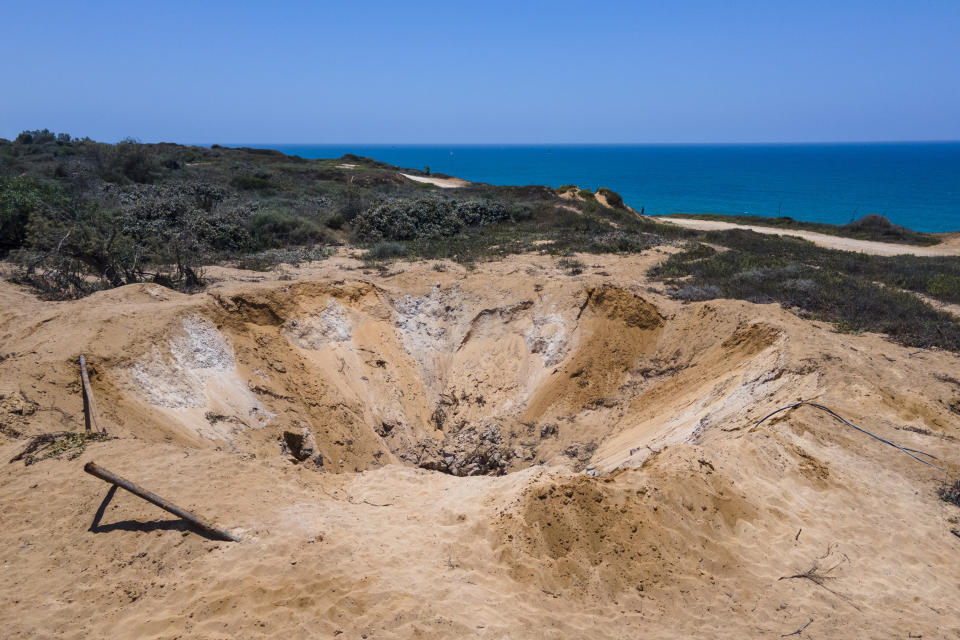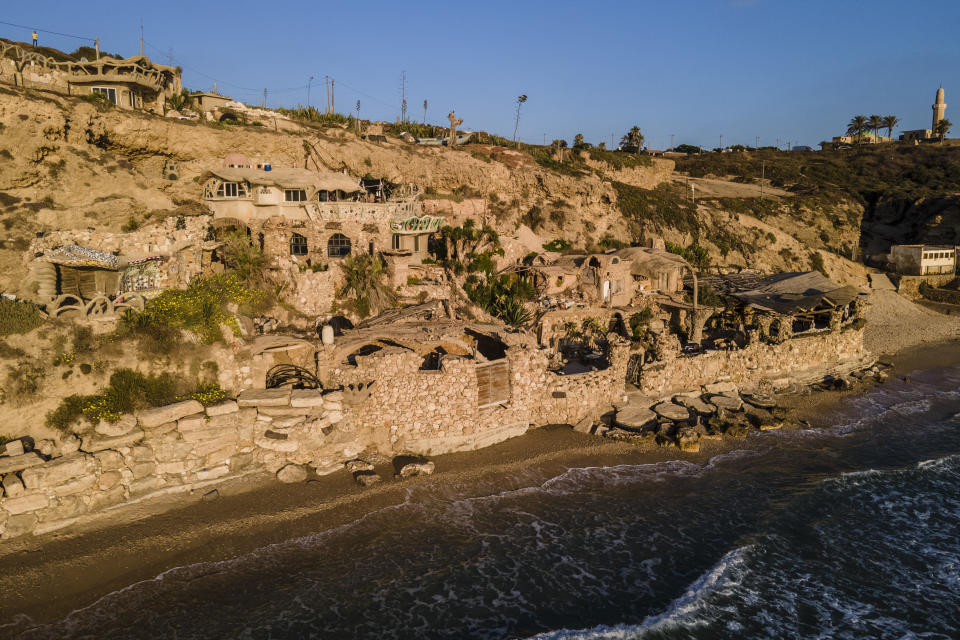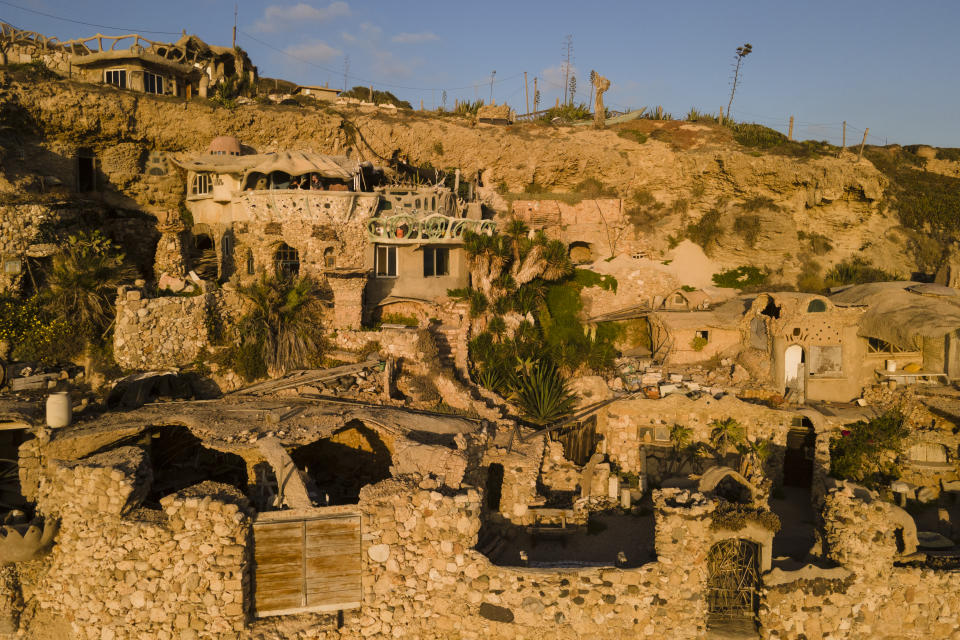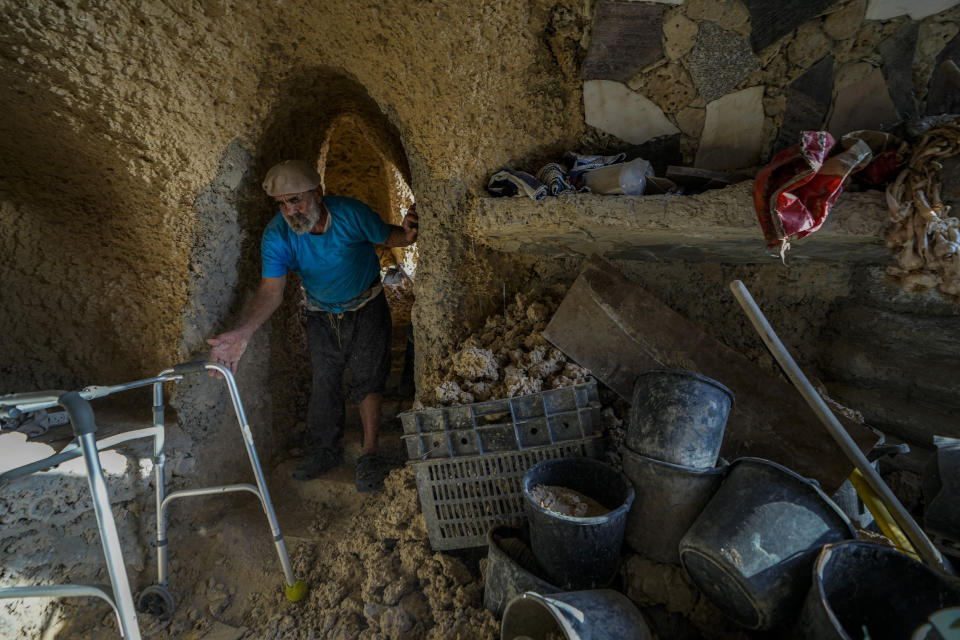After half a century, Israel moves to evict squatter from his cave home on the beach
- Oops!Something went wrong.Please try again later.
HERZLIYA, Israel (AP) — Over half a century, Nissim Kahlon has transformed a tiny cave on a Mediterranean beach into an elaborate underground labyrinth filled with chiseled tunnels, detailed mosaic floors and a network of staircases and chambers.
He lives in the one-of-a-kind artistic creation, which is a popular destination for local curiosity seekers, and Kahlon, 77, is quick to welcome visitors into his subterranean home.
Now, Israel’s government wants him out.
Fifty years after Kahlon moved into the home, Israel’s Environmental Protection Ministry has served him an eviction notice, saying the structure is illegal and threatens Israel’s coastline.
“Instead of encouraging me, they’re denigrating me,” Kahlon said, sitting in his mosaic-tiled living room, rolling a cigarette. The sun glimmered on the sea outside his west-facing windows.
Kahlon was living in a tent along the Herzliya beach north of Tel Aviv in 1973 when he says he began scratching into the sandstone cliffs and moved into a cave he carved.
Over time, his simple hole in the wall turned into a real-life sandcastle on steroids, filled with recycled wood, metal, ceramic and stone. Nearly every surface of his main quarters is covered in elaborate mosaics, made from discarded tiles of every color that he collected from dumpsters in Tel Aviv over the years. Recycled glass bottles serve as decoration and insulation on exterior walls.
Every wall in the labyrinthine complex is curved, and stairways bend and branch through the bedrock to chambers of different design and purpose. The complex has plumbing, a phone line and electric lighting in its many rooms, and Kahlon insists his construction is sturdy.
“From the stones I quarry I make a cast and build a wall. There’s no waste here, only material, that’s the logic,” he said. “Everything is useful, there’s no trash.”
Kahlon said he received a demolition order back in 1974 that was never carried out.
Since then, he says has never heard any opposition from the authorities until last year. The eviction is on hold until later this month to give him time to appeal.
He acknowledges he never received a building permit, and city hall shut down a beachfront restaurant he opened years ago. But his main argument is that local authorities connected his cave to the electric grid decades ago.
“I am not leaving here. I am ready for them to bury me here,” said Kahlon, a gruff but amiable chatterbox with a grey beard and beret. “I have nowhere to go, I have no other home.”
Kahlon's cave home is on the outskirts of Herzliya, a seafront city 8 miles (13 kilometers) north of Tel Aviv. It stands in contrast to the luxury homes that dot much of the beachside town — one of the most exclusive addresses in a country with a dire housing crunch.
A few hundred meters (yards) north of Kahlon’s cave is a Crusader castle -- site of a battle between Richard the Lionheart and Saladin over 800 years ago — as well as an abandoned facility that once belonged to Israel Military Industries, a defunct government-owned arms maker.
The facility, where explosives were developed and tested, was abandoned nearly 30 years ago after a massive explosion in 1992 killed two workers, damaged hundreds of buildings and shattered windows as far away as Tel Aviv. Last month, another explosion blew a massive crater in the sandy soil not far from Kahlon’s cave.
Various Israeli government authorities have accused each other of being responsible for cleaning up the patch of derelict, polluted ground over the decades. The Environmental Protection Ministry said that it has conducted repeated surveys to assess the extent of the pollution.
A full-scale cleanup, however, has not been done since the site was abandoned in the 1990s.
The ministry said the Defense Ministry and IMI, which was taken over by defense contractor Elbit Systems five years ago, are responsible for security at the site — whose main gate remains wide open and is frequently the scene of rogue raves — and that “there weren’t supposed to be any remnants of live ammunition” inside.
The Environmental Protection Ministry also said Kahlon had caused “significant damage to the cliff, endangered the public and reduced the beach for public passage” over the past 50 years. It says the recent explosion only increases the potential risk to the cliff.
The ministry accused the Herzliya municipality and other authorities of failing to address the situation over the years and claimed it has tried since 2016 to resolve the issue. In the end, it said it issued the eviction order “to remove the harm to the coastal environment” and said the Herzliya municipality has found alternative housing for Kahlon.
In the meantime, Kahlon’s friends and family have launched a crowdfunding campaign to help raise money for his legal defense while Kahlon continues to pursue his life’s work.
After an interview with The Associated Press, Kahlon picked himself up, grabbed his walker and a mason’s hammer and commenced chipping away at a nearby tunnel.
“I’m doing something to feel something,” he said. “I can’t sit around all day.”
